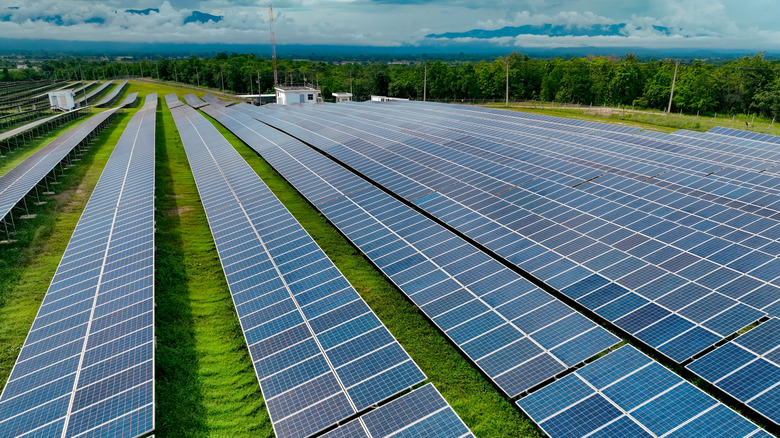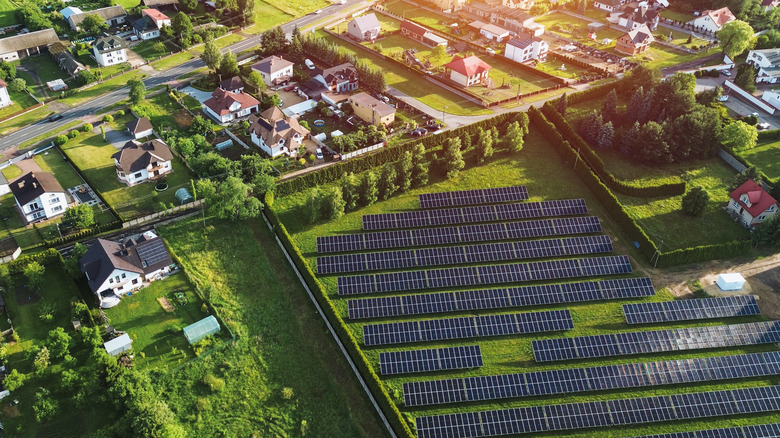What Impact Do Solar Farms Have On Property Value?
Row after row of photovoltaic panels strung across the landscape are a sign of a community's commitment to renewable energy. In the case of agrivoltaics, crops, livestock, or pollinator habitat occupy the same property as the solar panels, keeping the land in traditional production while combining it with energy production. The farms are a form of power plant, usually generating electricity from the sun and transferring it to the power grid. Their scale differentiates them from the panels you may have on your roof or on your property; just two solar arrays in Pennsylvania cover 1600 acres. Solar farms do have a negative impact on property values, but you might find it surprising that the impact is so small.
Your property's distance from the solar farm is the primary factor in determining the change in its value. Several studies verify this. According to an aggregate analysis published by Florida State University, the decrease in value ranges from 1.5% to 2.6% for homes within 1 mile or less of a solar farm. Homes more than a mile away maintained their value. Even if your land abuts a solar farm, there are steps you can take to offset the drop in your property value. You can boost your property value with affordable lawn and landscaping changes, creating a buffer zone with trees, or counter the decrease by increasing the value of your home by adding solar panels to your property.
Solar farm factors that might decrease your home's value
According to survey data published in Frontiers in Sustainable Energy, the majority of Americans feels either positive or neutral about solar farms, with only 15% having negative feelings. People who lived closest to large solar farms were the most likely to disapprove. This acceptance by the majority of the benefits of renewable energy provided by solar power may contribute to how small the actual reduction in property value is, even with the homes closest to the solar farm. In fact, some homeowners don't see proximity to a solar farm as a negative because the land has been reused in a more appealing way, because the operator of the farm has used trees to create a substantial privacy fence, or because the land won't be used in a less beneficial way in the future.
Sometimes negativity about solar farms simply comes from a lack of information. People's perception of the impact of a solar facility on their home can be colored by factors like whether or not it's visible to passers-by, noise, air quality, and safety. Generally, the sound created by a solar farm comes from the inverters and transformers, but they're usually placed far enough away from homes to be out of hearing range. Even though the use of synthetic chemicals called PFAS is sometimes cited as a concern, they're rarely used in solar panels. Other health and safety risks are negligible. In fact, solar farms don't create air pollution or greenhouse gasses — they actually improve air quality because they reduce the need for fossil fuels.

